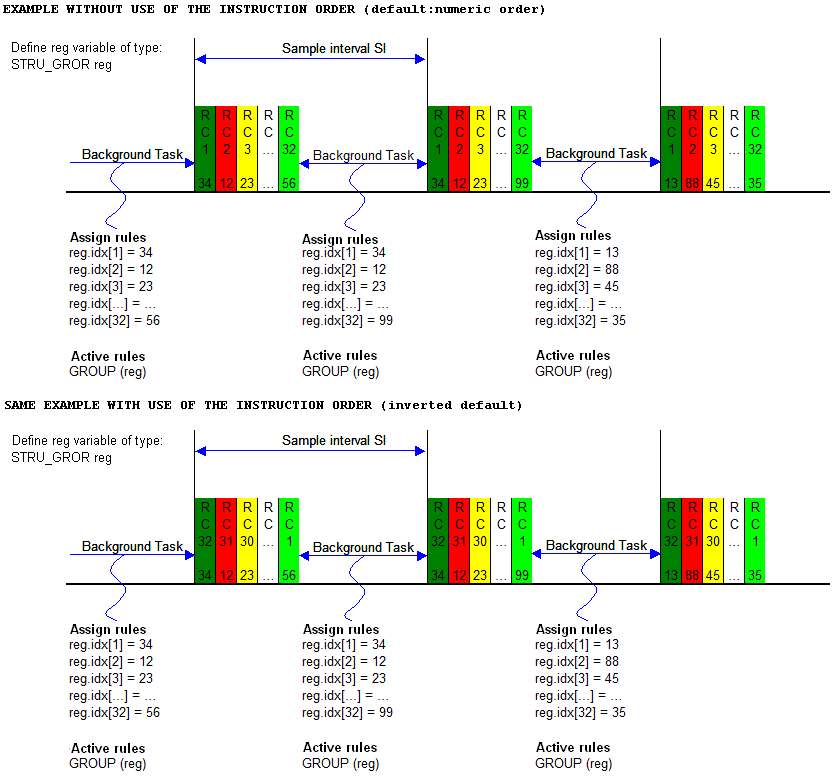To fully understand the meaning of this fundamental instruction of the R3 programming language, the following must be kept in mind:
•In the synchronous task ( $RULE file) the user has the ability to write a very large number of routines called RULEs (rules). Each RULE has a specific task, and the fact that one can write so many of them gives the programmer the opportunity to subdivide the various problems he will face
•The synchronous task can execute up to 32 RULE executors(RCs) simultaneously
•To associate the executors (RC) with the RULE number, the programmer must use the group instruction
•To specify the order in which the executors (RCs) are to be processed, the programmer must use the order instruction (defaults in sequence from 1 to 32)
•The predefined variable RC(n) identifies the nth of 32 executors. Its content is the RULE number associated with the nth executor via the group instruction
•The predefined variable OC(n) identifies the processing order of the 32 executors (RC)
For better understanding, let us analyze the time when RTE is about to execute the synchronous task (the time interval is represented by the predefined variable si). RTE executes up to 32 RULE executors (RCs) which contain the RULEs triggered by the group instruction in the sequential order specified by the order instruction.
Syntax |
group stru_gror stru |
|---|---|
stru |
Structure of type stru_gror in which the rules will be inserted |
Validity |
Rule, Task |
Note |
Example of use:
Example of use:
|

